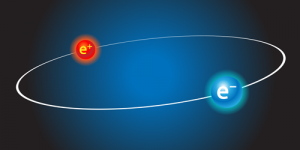Here's a light-hearted guide to the death of the telephone:
End of the line: our guide to the death of the telephone | Culture | The Guardian
More imbecilic than light hearted... 🙂
Everyone in the industry is well aware of the demise of the landline - BT's various approaches to acronyms and tech for this could be called hilarious - or possibly imbecilic too!!
Then there's the debacle that despite being ignored, won't go away, the 2G turnoff and all those 2G modems in smart meters... (smets2 meter specs date from over a decade ago, and were obsolete before they started to install. A real horse designed by a committee).
Which reminds me of this old joke:
Attachments
Last edited:
To be more on topic:
There is no mention about Dragan Slavkov Hajdukovic.
I've found some quite interesting articles:
http://lindamorabito.com/research.html
Quote from above link:
" "In regards to Hajdukovic’s premise of virtual gravitational dipoles in the Quantum Vacuum, particle physicist Thomas J. Phillips writes,
“The assumption of repulsive gravity between matter and antimatter simultaneously solves the mysteries of the missing antimatter [(the fact that we live in a universe composed of matter and not anti-matter)], dark matter and dark energy – replacing them with the challenge of how to fault all the arguments that have led us to believe that antimatter gravity is attractive. This assumption will soon be tested by the antihydrogen experiments, and if they discover that gravity is repulsive between matter and antimatter, I predict that physicists will quickly find this should have been obvious. Perhaps it already is and we just don’t realize it yet (Phillips 2014).” "
If antimatter falls up, it could explain dark energy | by Tim Andersen, Ph.D. | The Infinite Universe | Jul, 2021 | Medium
Cosmological Origins and Evidence of Antimatter – Young Scientists Journal
https://arxiv.org/ftp/arxiv/papers/1911/1911.10942.pdf
There is no mention about Dragan Slavkov Hajdukovic.
I've found some quite interesting articles:
http://lindamorabito.com/research.html
Quote from above link:
" "In regards to Hajdukovic’s premise of virtual gravitational dipoles in the Quantum Vacuum, particle physicist Thomas J. Phillips writes,
“The assumption of repulsive gravity between matter and antimatter simultaneously solves the mysteries of the missing antimatter [(the fact that we live in a universe composed of matter and not anti-matter)], dark matter and dark energy – replacing them with the challenge of how to fault all the arguments that have led us to believe that antimatter gravity is attractive. This assumption will soon be tested by the antihydrogen experiments, and if they discover that gravity is repulsive between matter and antimatter, I predict that physicists will quickly find this should have been obvious. Perhaps it already is and we just don’t realize it yet (Phillips 2014).” "
If antimatter falls up, it could explain dark energy | by Tim Andersen, Ph.D. | The Infinite Universe | Jul, 2021 | Medium
Cosmological Origins and Evidence of Antimatter – Young Scientists Journal
https://arxiv.org/ftp/arxiv/papers/1911/1911.10942.pdf
A photon has momentum but no rest mass for all intents and purposes. It gets ‘bent’ by following the curvature of space time, but it doesn’t interact gravitationally with matter ie you can’t use the classic Newtonian relationship to describe its behavior in the presence of a mass - you have to use Einstein’s field equations for that.
So matter and energy are NOT equivalent.
Someone lied to me.
Well, maybe I shouldn't say that, but it's frustrating to not know when something is a simplification and that further details are different from what one would logically assume.
If you smash matter together you get pure energy, which then in turn creates various particles.
It's all the same thing, just following rules like conservation of charge, spin, momentum, etc.
Theories are tentative, and they are all simplifications and abstractions from reality (whatever that is).
We have no "true" theories, just ones that have not yet been disproven. This includes general relativity
and quantum mechanics.
It's all the same thing, just following rules like conservation of charge, spin, momentum, etc.
Theories are tentative, and they are all simplifications and abstractions from reality (whatever that is).
We have no "true" theories, just ones that have not yet been disproven. This includes general relativity
and quantum mechanics.
Last edited:
Well, maybe I shouldn't say that, but it's frustrating to not know when something is a simplification and that further details are different from what one would logically assume.
So maybe photons are Schrödinger photons. If you could observe them, they have mass and also do not have mass?
Is the photon the fundamental building block?
A good book that really describes this stuff is ‘The First Three Minutes’ by Steven Weinberg
The First Three Minutes: A Modern View Of The Origin Of The Universe: Amazon.co.uk: Weinberg, Steven: 8601404887574: Books
The First Three Minutes: A Modern View Of The Origin Of The Universe: Amazon.co.uk: Weinberg, Steven: 8601404887574: Books
Thanks Gyuri, I had a quick look at the above link and here's what I interpret about the "antihydrogen experiments".“The assumption of repulsive gravity between matter and antimatter ... will soon be tested by the antihydrogen experiments."
If antimatter falls up, it could explain dark energy | by Tim Andersen, Ph.D. | The Infinite Universe | Jul, 2021 | Medium
Antihydrogen is the antimatter equivalent of hydrogen and is made up of an antiproton and positron instead of a proton and electron.
The antihydrogen particles produced at CERN are travelling near the speed of light, so the vertical distance they fall (or rise!) due to gravity will be extremely small during the short time they are traversing the apparatus.
(Compare this to a high velocity rifle bullet, which falls very little due to gravity during the short time it takes to reach its target.)
Researchers hope to slow down the antihydrogen particles using lasers and magnetic traps to see clearly whether they are attracted or repelled by the Earth's gravity.
If the experiments show that antimatter falls up i.e. is repelled by ordinary matter, a lot of theoretical ideas about the universe will have to change!
A good book that really describes this stuff is ‘The First Three Minutes’ by Steven Weinberg
Out of curiosity, how is a measure of time arrived at, such as the first three minutes of the universe, since time and space were a point source in the beginning?
Subjectively, maybe the whole expanding universe could still (ha!) be considered as a point, since there's no outside of it to observe it from.
Other interesting articles:
https://indico.cern.ch/event/336103...1204230/1754201/CyclicUniverse-Hajdukovic.pdf
https://hal.archives-ouvertes.fr/hal-00965289v2/document
Dark Matter Is an Illusion, New Antigravity Theory Says
That would be nice if our member cnpope would chime in to say to us about this topic.
😉
Yeah, and I would like to see in the poll something like this:
I think, we live in a cyclic universe.
https://indico.cern.ch/event/336103...1204230/1754201/CyclicUniverse-Hajdukovic.pdf
https://hal.archives-ouvertes.fr/hal-00965289v2/document
Dark Matter Is an Illusion, New Antigravity Theory Says
That would be nice if our member cnpope would chime in to say to us about this topic.
😉
Yeah, and I would like to see in the poll something like this:
I think, we live in a cyclic universe.
Further investigation of my new brighter warm white LED bulbs reveals that 100W equivalent is actually 14.5W. Not 10W as the packaging implies. My lawyers may be in touch with Tesco.

Recall I was mystified why 60W equivalent was 9W. Conservation of Energy is safe. 🙂
I did read the PDF suggesting the finite speed of the photon is caused by interactions with virtual fermion pairs. It's a plausible piece of dimensional recasting of the electrical permittivity and magnetic permeability of empty space into Planck quantum units and c, but whether it should be taken seriously remains to be seen.
Similar issues plague the Casimir Effect:
Casimir effect - Wikipedia
It can be recast into more classical Van Der Waals forces.
I must admit I had never thought about anti-particles being repelled by gravity. But can't think of a test that has been done, since gravity is usually overcome by other forces.
My current interest is spin, as usual.
The Feynman Lectures on Physics Vol. III Ch. 18: Angular Momentum
Feynman investigates the Positronium atom:
Positronium - Wikipedia
What is interesting to me is that the atom has several initial states of varying lifetimes.
Para Positronium lasts 0.1244 ns.
Ortho Positronium lasts 138.6 ns.
2s Positronium lasts a whopping 1100 ns.
(This is because a 2s state cannot directly decay to a 1s in the theory, because no angular momentum is available. S states being zero angular momentum in Quantum Theory. 2p states can decay to 1s with the emision of a spin 1 photon.)
Recall I was mystified why 60W equivalent was 9W. Conservation of Energy is safe. 🙂
I did read the PDF suggesting the finite speed of the photon is caused by interactions with virtual fermion pairs. It's a plausible piece of dimensional recasting of the electrical permittivity and magnetic permeability of empty space into Planck quantum units and c, but whether it should be taken seriously remains to be seen.
Similar issues plague the Casimir Effect:
Casimir effect - Wikipedia
It can be recast into more classical Van Der Waals forces.
I must admit I had never thought about anti-particles being repelled by gravity. But can't think of a test that has been done, since gravity is usually overcome by other forces.
My current interest is spin, as usual.
The Feynman Lectures on Physics Vol. III Ch. 18: Angular Momentum
Feynman investigates the Positronium atom:
Positronium - Wikipedia
What is interesting to me is that the atom has several initial states of varying lifetimes.
Para Positronium lasts 0.1244 ns.
Ortho Positronium lasts 138.6 ns.
2s Positronium lasts a whopping 1100 ns.
(This is because a 2s state cannot directly decay to a 1s in the theory, because no angular momentum is available. S states being zero angular momentum in Quantum Theory. 2p states can decay to 1s with the emision of a spin 1 photon.)
What is useful to know about a light bulb is its energy efficiency.Recall I was mystified why 60W equivalent was 9W. Conservation of Energy is safe. 🙂
The higher the number of lumens per watt, the greater the energy efficiency.
Working this ratio out allows us to compare different light bulbs irrespective of their type, whether they be LED, CFL, halogen or incandescent.
We can then choose the right brightness for the minimal consumption of energy.
For those of us who are not particle physicists, here's an overview of positronium:Feynman investigates the Positronium atom:
Positronium (Ps) is effectively an atom without a nucleus. Circling in orbit around the non-existent nucleus is a negatively charged electron and a positively charged positron, the electron's antiparticle.
Not having the complexities of a nucleus makes positronium an ideal candidate to test the theory of quantum electrodynamics (QED) which explains how charged particles interact.
P.S. Steve mentions two orbital energy states of positronium, para-positronium (p-Ps) and ortho-positronium (o-Ps).
Attachments
Beyond C....
c++
No, not the language....
Information for the Media - Georg-August-Universitat Gottingen
//
c++
No, not the language....
Information for the Media - Georg-August-Universitat Gottingen
//
I remember discussing solitons earlier in the thread and that they are waves with just a single crest which can travel a long distance withour spreading out, thus maintaining their shape.
They happen on water (see attachment) and can, indeed, travel at quite a lick!
Thanks, I'll get round to digesting the contents of your link. 😎
Attachments
In fact, TNT, you and I could be communicatiing on the internet right now via solitons!
In order to send pulses across oceans, 'single mode' optical fibre was developed to work with very specially shaped infrared light pulses - infrared solitons.
The shape of the infrared light pulses does not change from input to output - even across thousands of miles of sea floor!
That's the reality of solitons. Unfortunately the construction of a new class of "hyper-fast" solitons as described in your link is still a long way from reality! 🙁
In order to send pulses across oceans, 'single mode' optical fibre was developed to work with very specially shaped infrared light pulses - infrared solitons.
The shape of the infrared light pulses does not change from input to output - even across thousands of miles of sea floor!
That's the reality of solitons. Unfortunately the construction of a new class of "hyper-fast" solitons as described in your link is still a long way from reality! 🙁
That would be a (shhh)political one.🙂I'm still trying to figure out what a mutiverse [sic] is!
Correct!
Mutyi – Wikipedia
In today's Hungarian language, mutyi means a secret agreement, the aim of which is to gain a common profit or benefit by excluding others from the information.
So it is the meaning of mutyiverse.
Mutyi – Wikipedia
In today's Hungarian language, mutyi means a secret agreement, the aim of which is to gain a common profit or benefit by excluding others from the information.
So it is the meaning of mutyiverse.
- Status
- Not open for further replies.
- Home
- Member Areas
- The Lounge
- What is the Universe expanding into..



